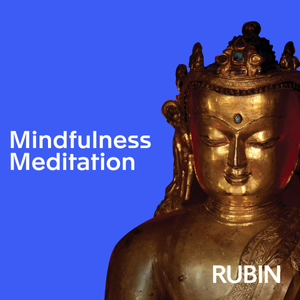
2-95. Mysteries of the Camel’s Hump
06/02/16 • -1 min
If a camel with one hump is a Dromedary and a camel with two humps is a Bactrian, what do you call a camel with no humps? Humphrey, of course. (badum tish).
Camels fascinate people, and the reason is obvious: they have humps. And what’s inside those humps? Inside those humps lies the core of this episode.
For many years, people thought that camels stored water in their humps. You can still find references to this on the Internet. It makes sense, right? They live in the desert where there is very little water, and when they find water, they drink massive quantities of it. It has to go somewhere, so it’s reasonable to assume that it goes into the hump.
But ask any camel butcher (and yes, camel meat is becoming more common in the US), and they’ll tell you that the hump is full of not water, but fat.
Where water is scarce, food is scarce, so this also makes sense. Rather than store their fat evenly around their body like many species, camels simply store it all in one or more humps. There is speculation that this helps the animal shed heat as all that insulating fat is in one place, but since camels also live in cold deserts, there’s probably more to it than that. It’s also interesting to note that camelids that don’t have humps, such as llamas, alpacas, vicuñas, etc. live in areas where food and water are more plentiful.
So, there you have it. The question is answered and we can move on.
And no, of course we can’t because I wouldn’t be talking about this if that’s all there was to it.
In 1981, a study by the University of Singapore proposed the idea that the fat in a camel’s hump could be turned into water through a process known as palmitate oxidation. If you break down fat with added oxygen, water is produced. And not a little. With enough oxygen, the potential amount of water in a camel’s hump could be measured in gallons.
So see? Camel’s humps do store water! Case closed. Take that grade-school science teacher!
Well, not so fast.
According to Dr. Anders Lundquist of Lund University in Sweden, it’s true that breaking down fat can produce water, but camels couldn’t use this water to quench their thirst. It would require so much oxygen to release water from fat stores that the animals would dehydrate from moisture lost during breathing in the arid environment. Most biologists agree with this conclusion.
So far as we can tell at this point, camel humps store fat which is used simply as a fuel reserve. Now go apologize to your grade-school science teacher, because they were right.
But a question does remain: how do camels store water? The same way many other animals do: throughout their body tissues. Camels do have ways of conserving moisture, though. Their noses have the ability to reabsorb water from their breath, and their digestive system is very good at removing water from food. It’s so good, that camel urine has the consistency of motor oil and their droppings are completely dry.
Camel humps provide a good example of how curiosity works: ideas are constantly questioned in light of new evidence, and no answer is ever complete or final. And because I can’t think of a way to wrap this up, here are five camel facts that you may not be aware of:
- The genus for the giraffe is Camelopardalis, which translates to Leopard Camel.
- Australia has the highest population of camels. None of them are native.
- Annoyed camels don’t spit. They’re actually regurgitating on you.
- Their red blood cells are circular rather than ovoid. This helps blood flow better when the animal is dehydrated.
- Male camels have an organ in their throats called a dulla, which can be inflated to attract females. It looks very much like the camel is sticking its tongue out and blowing a raspberry.

A bactrian camel. (
If a camel with one hump is a Dromedary and a camel with two humps is a Bactrian, what do you call a camel with no humps? Humphrey, of course. (badum tish).
Camels fascinate people, and the reason is obvious: they have humps. And what’s inside those humps? Inside those humps lies the core of this episode.
For many years, people thought that camels stored water in their humps. You can still find references to this on the Internet. It makes sense, right? They live in the desert where there is very little water, and when they find water, they drink massive quantities of it. It has to go somewhere, so it’s reasonable to assume that it goes into the hump.
But ask any camel butcher (and yes, camel meat is becoming more common in the US), and they’ll tell you that the hump is full of not water, but fat.
Where water is scarce, food is scarce, so this also makes sense. Rather than store their fat evenly around their body like many species, camels simply store it all in one or more humps. There is speculation that this helps the animal shed heat as all that insulating fat is in one place, but since camels also live in cold deserts, there’s probably more to it than that. It’s also interesting to note that camelids that don’t have humps, such as llamas, alpacas, vicuñas, etc. live in areas where food and water are more plentiful.
So, there you have it. The question is answered and we can move on.
And no, of course we can’t because I wouldn’t be talking about this if that’s all there was to it.
In 1981, a study by the University of Singapore proposed the idea that the fat in a camel’s hump could be turned into water through a process known as palmitate oxidation. If you break down fat with added oxygen, water is produced. And not a little. With enough oxygen, the potential amount of water in a camel’s hump could be measured in gallons.
So see? Camel’s humps do store water! Case closed. Take that grade-school science teacher!
Well, not so fast.
According to Dr. Anders Lundquist of Lund University in Sweden, it’s true that breaking down fat can produce water, but camels couldn’t use this water to quench their thirst. It would require so much oxygen to release water from fat stores that the animals would dehydrate from moisture lost during breathing in the arid environment. Most biologists agree with this conclusion.
So far as we can tell at this point, camel humps store fat which is used simply as a fuel reserve. Now go apologize to your grade-school science teacher, because they were right.
But a question does remain: how do camels store water? The same way many other animals do: throughout their body tissues. Camels do have ways of conserving moisture, though. Their noses have the ability to reabsorb water from their breath, and their digestive system is very good at removing water from food. It’s so good, that camel urine has the consistency of motor oil and their droppings are completely dry.
Camel humps provide a good example of how curiosity works: ideas are constantly questioned in light of new evidence, and no answer is ever complete or final. And because I can’t think of a way to wrap this up, here are five camel facts that you may not be aware of:
- The genus for the giraffe is Camelopardalis, which translates to Leopard Camel.
- Australia has the highest population of camels. None of them are native.
- Annoyed camels don’t spit. They’re actually regurgitating on you.
- Their red blood cells are circular rather than ovoid. This helps blood flow better when the animal is dehydrated.
- Male camels have an organ in their throats called a dulla, which can be inflated to attract females. It looks very much like the camel is sticking its tongue out and blowing a raspberry.

A bactrian camel. (
Previous Episode

2-94. The Dark Side of Curiosity: A Beating in Kenya
UPDATE AT THE END
This episode contains disturbing, violent content.
The word “curiosity” is popular these days. It’s associated with joy and wonder—isn’t it fun to learn things?!
But in reality, not everything we learn is entertaining. But it’s still vitally important.
This morning, May 17 2016, I watched a bit of CNN as i tried to wake up. It was non-stop Drumpf, with a book review about Wall Street. There was no mention of the police crushing a protest in Kenya while we in the US slept.
At this point, it would be helpful for you to look at an image. It’s not pleasant, and I won’t blame you for not clicking through. But if you’re curious, this will be worth your time and disgust. The image is here.
There image will become iconic. It’s a very clear picture of a police officer in full riot gear, “curb stomping” an unconscious man. If you’re unfamiliar with “curb stomping,” I’m sorry to inform you that it’s an act where you place someone’s head on a curbstone and stomp on it, with the goal of either crushing the skull or breaking the neck.
This is horrific stuff, and the image is proof-positive that police brutality is rampant.
But… the image doesn’t show what happened.
Before I explain, please know that I’m not defending the Kenyan police. Their actions were brutal and uncalled for. Chasing down protestors who are running away and clearly no threat, and then beating them with sticks, as other images show, can not be defended.
But while I was looking at the curb stomping image, I noticed a comment from a Kenyan who said “This picture doesn’t show what happened.” It’s such a clear image, that I wondered how that could be. I searched the news and found this brutal picture in a dozen locations. There are already memes that incorporate the picture and refer to the famous Orwell quote from 1984 “If you want a vision of the future, imagine a boot stamping on a human face – forever.” But I couldn’t find any explanation as to what actually happened in the photo.
When I did find the narrative, I was amazed. There was no stomping. It’s hard to believe, but it’s true.
There’s another quote, often attributed to Carl Sagan but one that’s existed for at least a century that says “extraordinary claims require extraordinary evidence.” The claim that this photo, which clearly shows a police office about to curb stomp a protestor DOESN’T actually show that is an extraordinary claim. And yes, the evidence against that claim is also extraordinary.
That evidence is a video, showing the incident from another angle. You can click here to see an animated gif, or here to see the entire video. The cop’s foot was actually going backwards, not down. And at no time during the video did he do anything more than kick the man in the buttocks and hit him with his baton. Kicking an unconscious man is unforgivable, but it’s not the same as attempted murder, which is what a curb stomp is. The cops were not trying to kill this man.
The story as best as I can piece it together from the video and reportedly eye-witness accounts is that the man stole a purse, was subdued and savagely beaten. He wasn’t protesting; he was just taking advantage of the chaos. Again, that is not a defense of the police, but it does change the story and meaning substantially.
The video shows police brutality. The image shows attempted murder. That’s the difference, and only curiosity will lead us to the place where we can cut through what people want us to see and arrive at what actually happened.
And could another video come along showing police curb stomping people? Absolutely, and if it does, I’ll consider it . But insofar as this image is concerned, we can learn that a single frame from time often tells a history that never happened. My fear is that few people will care enough to appreciate that.
UPDATE 1
And before I’ve even finished recording this, there’s an update. The Kenyan website Zipo is reporting that the man’s name was Ben Ngari, and that he succumbed from his injuries. However, the news report also says that he was a protestor and that the man was indeed curb stomped. I can’t find another news source reporting this fact. Does Zipo have evidence that I haven’t seen? Did they not see the video? I don’t know.
But I do know that a picture is worth 1,000 words, and those words may not be telling the truth. I hope the truth is that the man in the green hoodie is currently recuperating from his unjust injuries. As for CNN, more Drumpf, and no mention of this event at all.
...
Next Episode

2-96. How Slavery Tore DC Apart – Literally
Have you ever wondered why Washington, D.C. or the District of Columbia got its strange shape? It started with James Madison, and his Federalist Number 43. His argument was simple: the federal government needed a home that was not included in any state. But where? In the complicated world of politics, it’s unsurprising that it was a compromise.
Though the United States won the Revolution, the new country was nearly bankrupt. For some relief, some founding fathers proposed that the federal government assume the debt incurred by the states. This was great for the Northern states, who still had a sizable amount of unpaid debt, but the Southern states had paid most of their foreign debt, so this deal wouldn’t help them at all. In fact, as they were responsible for a share of the Federal government’s debt, it would cost them money.
While the merits of this plan were being argued, the idea came for two Southern states, Maryland and Virginia, to donate land on either side of the Potomac and Anacostia rivers for the new seat of Federal government. This would give the South more influence simply due to proximity, and the hope was that this would be considered fair compensation for the imbalance in debt assumption. And it was! The deal was struck, and the Federal Government created a neat diamond shape called Washington: The Territory of Columbia, separate from all states. It was later called the District of Columbia when in 1801, Congress was given jurisdiction over the area. Washington is the name of the one and only city within the district, taking up the same amount of land.
Why a diamond? The Residence Act of 1790 declared that the District take up not more than 100 square miles, and the easiest way to calculate that would be to make a square ten miles long by ten miles wide. Once the general area was decided through more political wrangling, the committee emphasized the navigability of the river, and thus a diamond was formed, with the river running through the center.
But if you look at a map today, you’ll notice that this neat diamond has broken in half, right where the river is. What caused this? The answer is: Virginians and the pro-slavery movement. Since its inception, the District of Columbia was controversial to Virginians, who had given up land owned by powerful people. Not the least of these was George Washington himself, who owned a large tract of land on the river. The aggrieved Virginian’s initial effort to reduce their losses was an amendment that prevented public buildings from being built on the Virginia side. This set the stage for what was to come later.
The bickering never stopped completely, but it was in those heady days in the mid-19th century where words became action. States were being divided into “slave” and “free,” and the federal government was in constant struggle over which side would take control. With the talk of abolishing slavery, the residents of Virginia became alarmed at what they saw as a threat to their economy, and joined together to lobby for the return of their portion of DC. This additional land would give them two more representatives and help tip the scale towards the pro-slavery side of upcoming legislation.
And they were successful. In 1846, Congress signed the “Retrocession,” granting back to Virginia all the land on their side of the diamond. But it was not through legislation that the United States would settle the issue of slavery. That took a horrific civil war. But the Virginians did further their cause in one small way: they “enjoyed” eight more months of slavery than the rest of the what was the District of Columbia. Eight months before the Emancipation Proclamation set all slaves free in Confederate states (but not Union states, oddly), slaves were freed in the District, a place in the United States that has always had a large African American population.
The end of slavery did not bring the District back together. What was given back to Virginia in the Retrocession remains part of Virginia. But the broken-diamond of our Capitol is a cartographical reminder of the scars that remain due to slavery’s legacy in our country.
If you like this episode you’ll love
Episode Comments
Generate a badge
Get a badge for your website that links back to this episode
<a href="https://goodpods.com/podcasts/daily-curio-college-of-curiosity-107428/2-95-mysteries-of-the-camels-hump-5571591"> <img src="https://storage.googleapis.com/goodpods-images-bucket/badges/generic-badge-1.svg" alt="listen to 2-95. mysteries of the camel’s hump on goodpods" style="width: 225px" /> </a>
Copy





